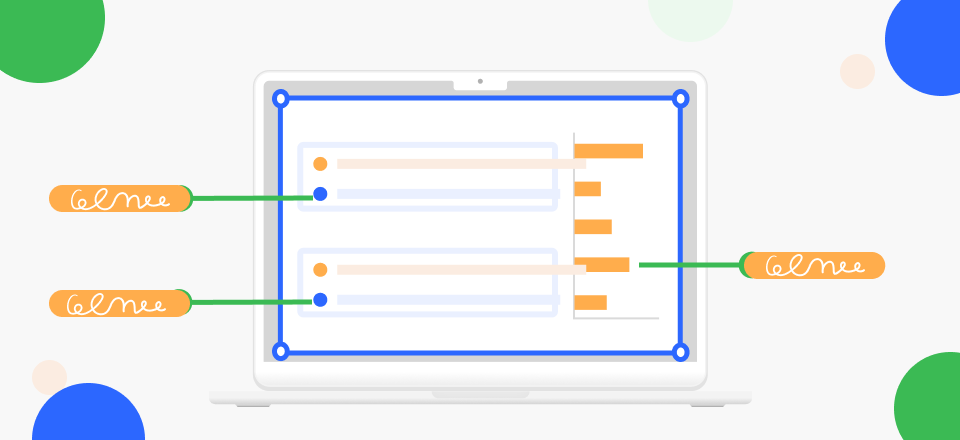DevOps combines multiple engineering best practices for efficient execution with the goals of continuous improvement, quick delivery, and cost optimization. Therefore, a wide range of engineers is needed to back up DevOps in a business. Platform engineers, automation engineers, build and release engineers, data analysts, database engineers, and product managers are all essential team members when implementing DevOps at the corporate level.
The term “DevOps monitoring” describes the automated, never-ending procedure of monitoring various stages of the software development life cycle. To properly monitor DevOps, you need good DevOps Monitoring Tools. However, if you’re unaware of the best monitoring tools for DevOps, you’re at the right place. In this article, you’ll discover the finest DevOps monitoring tools, along with the benefits of DevOps monitoring. Let’s get started!
What Are DevOps Monitoring Tools?
DevOps monitoring tools are a suite of programs used by DevOps groups to keep tabs on the health of their systems and ensure that their apps and infrastructure are always up and running well. Tools like this provide DevOps teams with immediate information on the system’s state, allowing them to fix problems before they affect customers. To further aid in infrastructure optimization, DevOps monitoring technologies might reveal trouble spots that the team can then address.
DevOps monitoring solutions primarily gather and analyze data from multiple sources, including servers, apps, and network devices. The collected information is then utilized to generate real-time charts and dashboards showing the system’s status. The DevOps team may utilize this data to spot patterns, investigate outliers, and fix problems as they develop. Furthermore, certain DevOps monitoring solutions may automate tasks in response to situations, such as restarting a service or scaling up a cluster.
Benefits of Using DevOps Monitoring Tools
There are several advantages to using DevOps monitoring tools:
- The data collected by DevOps monitoring technologies are used throughout the software development lifecycle. This information may be utilized to spot issues before they influence users, allowing for timely troubleshooting.
- Aids prevents failures and downtime by monitoring the health of apps and the underlying infrastructure. In the long term, this may help businesses save both time and money.
- Can enhance the user experience by ensuring that apps function properly and are accessible when needed. Due to this, you customers will be satisfied and will become loyal.
- Assists in increasing efficiency and productivity by automating routine processes and revealing hidden patterns in the software development and deployment process in real time. This may free up resources for teams to concentrate on research and development.
- Security issues may be identified and mitigated with the use of DevOps monitoring tools. This may aid in keeping businesses safe from hacking and other forms of cybercrime.
Types of Monitoring in DevOps
DevOps monitoring is of different types, including:
- Server Monitoring: Information about your server’s performance may be gathered via server monitoring, sometimes referred to as resource monitoring or infrastructure monitoring. Information on storage use, CPU utilization, and memory availability are all provided. In cloud computing environments, it helps gather information from virtual server systems.
- Network Monitoring: It monitors data transfers into and out of your network. This monitoring tool lets you keep tabs on anything from switches and firewalls to servers and their incoming and outgoing traffic.
- Service Quality Monitoring: It is a metric for determining the overarching quality of service. These instruments make their requests to the server, tracking metrics like response time and success rates. It is critical to promptly identify and address application performance problems to keep services running smoothly.
Top 8 DevOps Monitoring Tools
Looking for the best tools to monitor DevOps in your company? Try the tools below:
White-box monitoring is the primary focus of Prometheus, a metrics-based time series database. It’s a system monitoring and alerting solution that’s open source and has a thriving community behind it. The tool’s user and development community has flourished since its introduction because many organizations and companies have included it in their ecosystems.
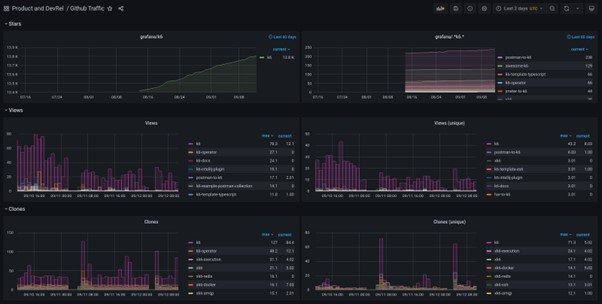
DevOps Monitoring Tools – Prometheus
Prometheus’s Top Features
- Offers a versatile language for performing aggregate operations on its time series’ many labels.
- Can use a push gateway to accommodate transient operations.
- Exporters such as HAProxy, StatsD, Graphite, etc., are designed to run efficiently on a single server node.
- Comes with various preinstalled libraries and servers (for Windows, Linux, MySQL, and more).
What Prometheus Is Best for
With its alert manager, Prometheus is a fully functional, end-to-end monitoring system. Therefore, you won’t need to seek additional alert mechanism integrations. It is a standalone monitoring system.
Customer Ratings
- G2: 4.4/5 (40 Reviews)
- Capterra: 4.5/5 (6 Reviews)
Prometheus’s Price Plans: Free to use
In a DevOps environment, Nagios can keep tabs on anything from infrastructure to software to customer service to internal operations. It offers resources for keeping tabs on the health and performance of software across platforms, from Windows to Linux to UNIX to the web. This top-notch tool is quick to run tests and easy to set up on both the client and server sides.
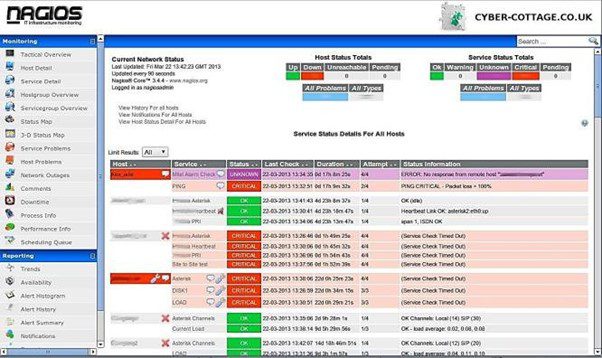
DevOps Monitoring Tools – Nagios
Nagios’s Top Features
- Keeps an eye on network equipment, including routers and switches, for signs of congestion or malfunction.
- Offers more than 5,000 distinct monitoring add-ons to choose from.
- Provides options for monitoring your servers, including both agent-based and agent-free monitoring.
What Nagios Is Best for
Nagios is ideal for keeping tabs on the well-being and accessibility of your servers, networks, and software.
Customer Ratings
- G2: 4.5/5 (49 Reviews)
- Capterra: 4.1/5 (35 Reviews)
Nagios’s Price Plans: Free to $1995 per license
New Relic offers full-stack observability and is a very effective cloud-based monitoring tool. Your network, infrastructure, apps, machine-learning models, end-user experience, and so on can all be monitored in real time and in great detail.
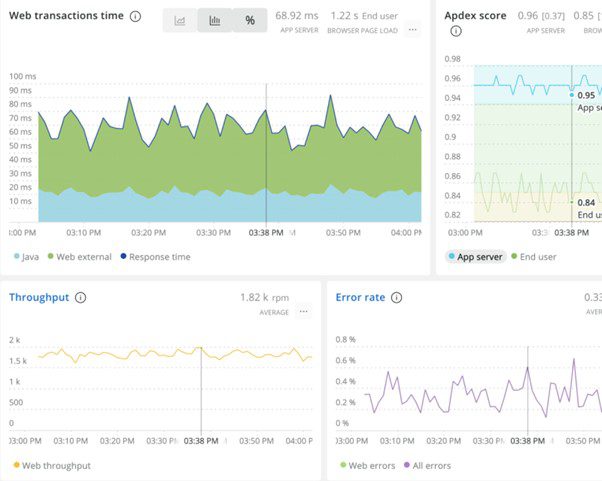
DevOps Monitoring Tools – New Relic
New Relic’s Top Features
- Offers many prebuilt connectors and works with various tools and platforms, including cloud providers.
- Gives specifics that aid in problem diagnosis and resolution.
- Provides a real-time, comprehensive overview of your whole system, including all its components, apps, end users, and machine learning models.
What New Relic Is Best for
The ideal usage for New Relic is in performance monitoring and optimization of advanced online applications and cloud computing systems.
Customer Ratings
- G2: 4.3/5 (48 Reviews)
- Capterra: 4.5/5 (165 Reviews)
New Relic’s Price Plans: Free to $49 per month
Splunk is a potent platform for analyzing machine data (particularly logs, often created but seldom utilized successfully). It compiles everything you need into one convenient index from which you can quickly get the facts you need. Regarding machine-generated data, Splunk can give you a birds-eye perspective of what’s happening.
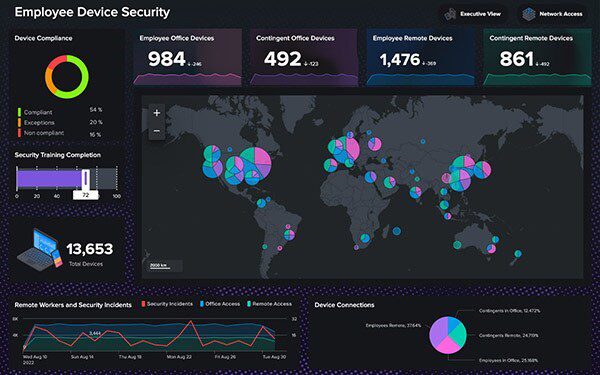
DevOps Monitoring Tools – Splunk
Splunk’s Top Features
- Allows you to examine information gathered from various sources, including computer networks, servers, software programs, etc.
- Offers software like Splunk Light for transferring data from remote servers to the central Splunk engine.
- Indexes the information in such a way that it yields excellent analytical findings.
What Splunk Is Best for
The Production data center and the other uses in the Marketing department are the best practice for the tool’s effectiveness.
Customer Ratings
- G2: 4.3/5 (373 Reviews)
- Capterra: 4.6/5 (192 Reviews)
Splunk’s Price Plans: $600 per GB on 1 year’s license.
ChaosSearch is a search engine tailored to the unpredictability of the web. The ChaosSearch method begins with an initial set of randomly chosen map locations, then, one at a time, removes from consideration those spots that are farther away from the destination than the others. It also keeps tabs on containers running on Kubernetes or Docker. It provides storage-based isolation on Amazon S3, SSO, and role-based access control for safeguarding sensitive information.
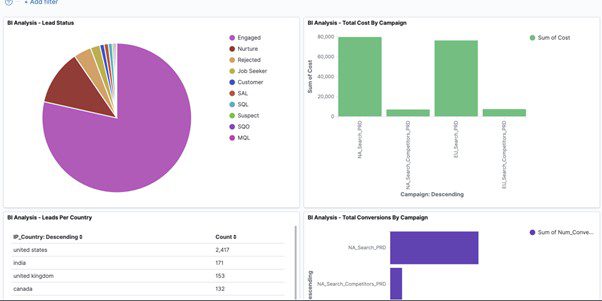
DevOps Monitoring Tools – ChaosSearch
ChaosSearch’s Top Features
- Makes it possible to keep tabs on functioning components, including databases, microservices, containers, and end-user devices.
- You can manage triggers, alarms, and the administration of logs and synthetic data.
- Delivers alerts immediately upon detection of abnormalities and keeps tabs on infrastructure parts.
What ChaosSearch Is Best for
Developers and system administrators may use this tool to quickly and easily locate data that is relevant to their jobs. With an index of more than a billion pages and the ability to provide relevant results in a fraction of the time, ChaosSearch is also useful for doing Internet-based research.
Customer Ratings
- G2: 4.8/5 (2 Reviews)
- Capterra: 4.7/5 (3 Reviews)
ChaosSearch’s Price Plans: Free to $270 per month
DataDog is a cloud-hosted infrastructure monitoring solution that works with various other services. DevOps teams are given the tools they need to monitor evolving cloud infrastructures. This facilitates a bird’s-eye view of the overall health of your infrastructure according to geography, application, or service. Customers with cloud or hybrid infrastructures will benefit greatly from the flexibility of the DataDog agent, which can operate on a wide variety of platforms.
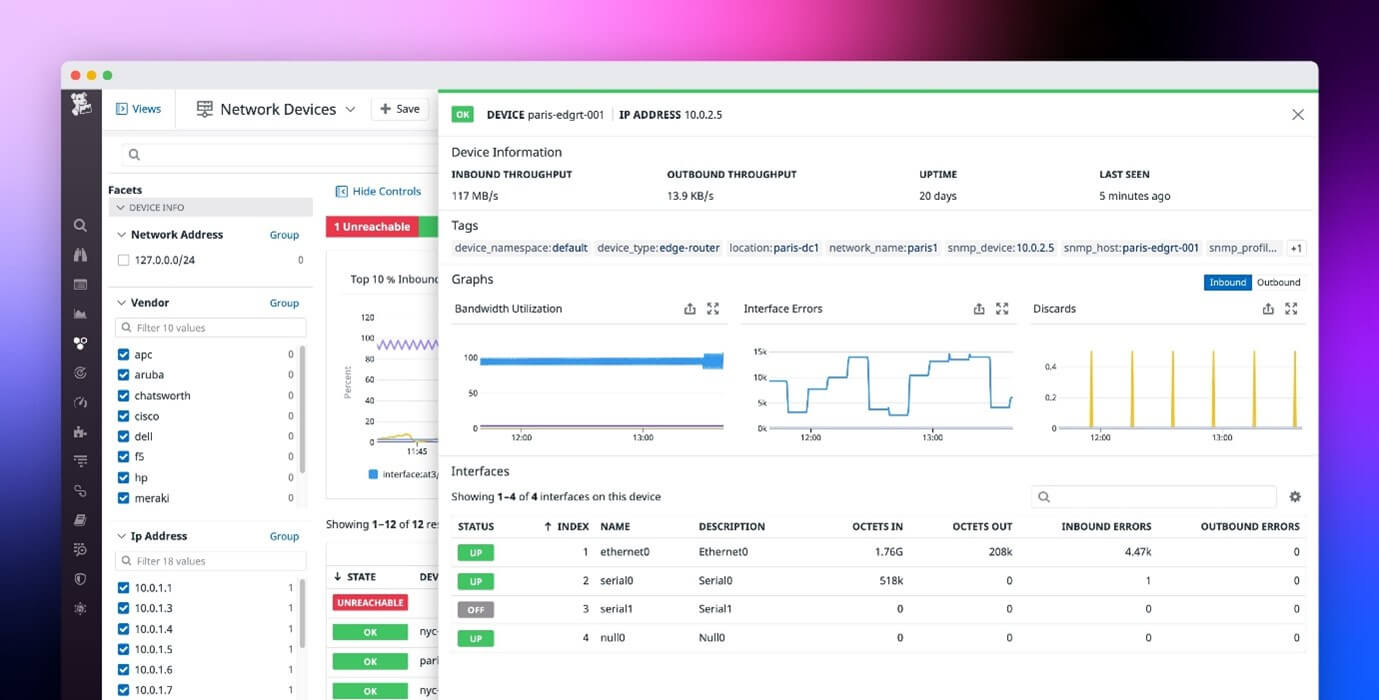
DevOps Monitoring Tools – Datadog
Datadog’s Top Features
- Automatic compatibility with the most used frameworks, IDEs, and databases.
- Provides prebuilt dashboards for all specified add-ons.
- Users can develop their dashboards to monitor and assess various programs and services.
- Enables users to build a team of any size, communicate with them, and work together utilizing an integrated alert system.
What Datadog Is Best for
DataDog’s advanced dashboards and alerting features make it ideal for keeping tabs on hybrid and cloud-based networks.
Customer Ratings
- G2: 4.3/5 (410 Reviews)
- Capterra: 4.6/5 (215 Reviews)
Datadog’s Price Plans: Free to $15 per month
Web application testing is made possible with the help of Selenium, which is used to automate web browsers. It’s a powerful instrument for automating the testing procedure and examining the product’s quality. Create automated test cases, coded tests, and scripts to automate operations on a computer system using Selenium.
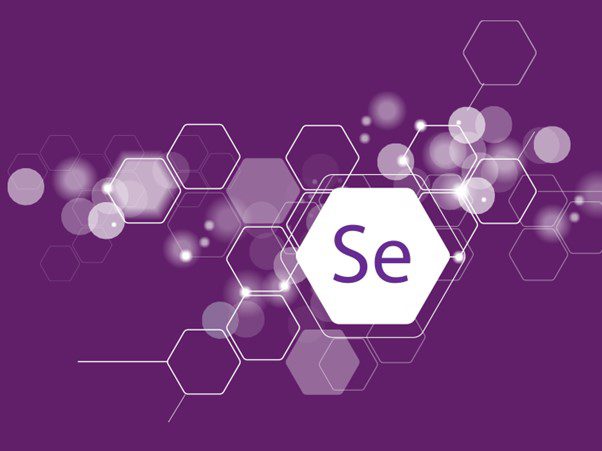
DevOps Monitoring Tools – Selenium
Selenium’s Top Features
- Regression tests that run in a web browser may be used to automate larger test suites.
- Offers a consolidated platform from which large-scale testing may be performed.
- Allows you to record easily and replay browser sessions.
What Selenium Is Best for
Selenium is an open-source web scrapping and automation tool, which makes it best for automated testing, web scraping, and cross-browser testing.
Customer Ratings
- G2: 4.4/5 (16 Reviews)
- Capterra: 4.4/5 (14 Reviews)
Selenium’s Price Plans: free to use
PagerDuty is a service that facilitates the execution of tasks that need close collaboration with operations professionals. The tool helps the development team monitor the application’s stability and performance and respond to emerging issues.
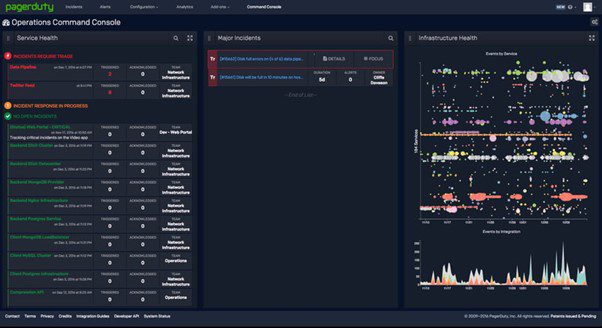
DevOps Monitoring Tools – PagerDuty
PagerDuty’s Top Features
- Facilitates the distribution of on-call duties across various teams and divisions.
- PagerDuty’s simple alerting API has made it a user favorite.
- Provides a top-notch alerting and incident response system that anybody can easily utilize.
What PagerDuty Is Best for
Alert monitoring, on-call scheduling, escalation procedures, and incident monitoring are some features this software works best for.
Customer Ratings
- G2: 4.5/5 (794 Reviews)
- Capterra: 4.6/5 (205 Reviews)
PagerDuty’s Price Plans: Free to $12 per month
Final Thought
DevOps has evolved as a crucial method for managing and streamlining the software delivery process in today’s fast-paced software development industry. DevOps monitoring tools are crucial since they provide real-time information about the software environment’s health and performance. And we hope you’ve found the best monitoring tool for DevOps after reading this article. Moreover, for questions or suggestions regarding DevOps monitoring, you can use the comments section.

The Gemoo Team The Gemoo Team is committed to building products that help people effectively communicate and collaborate.










